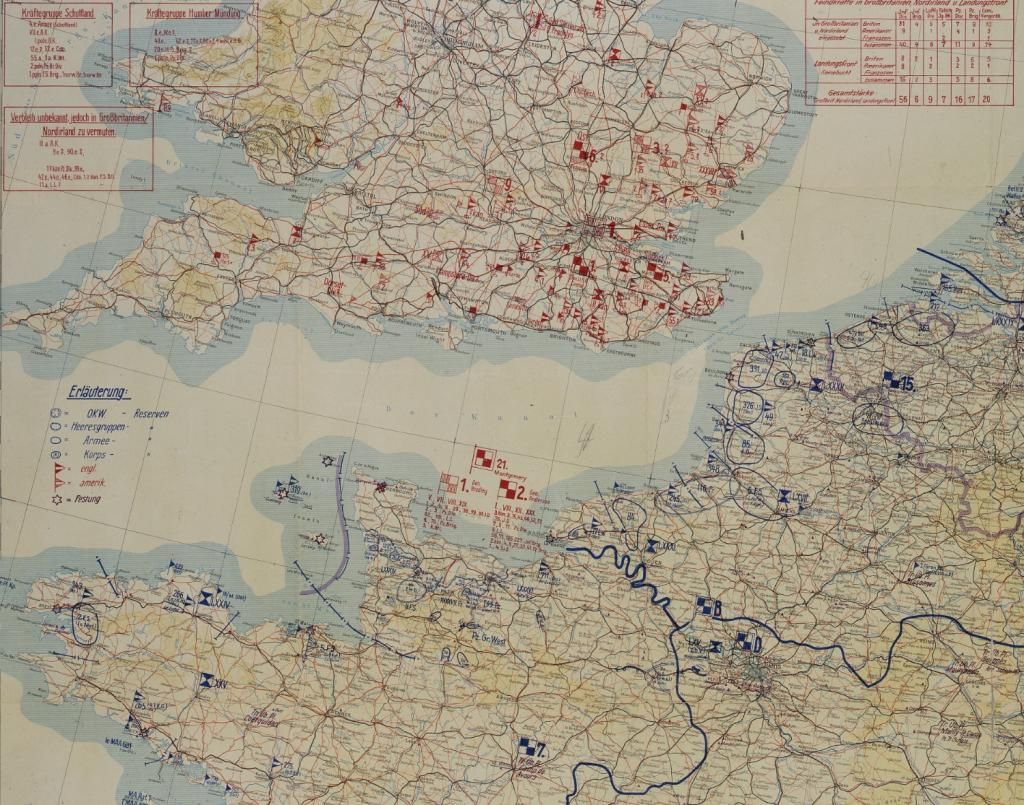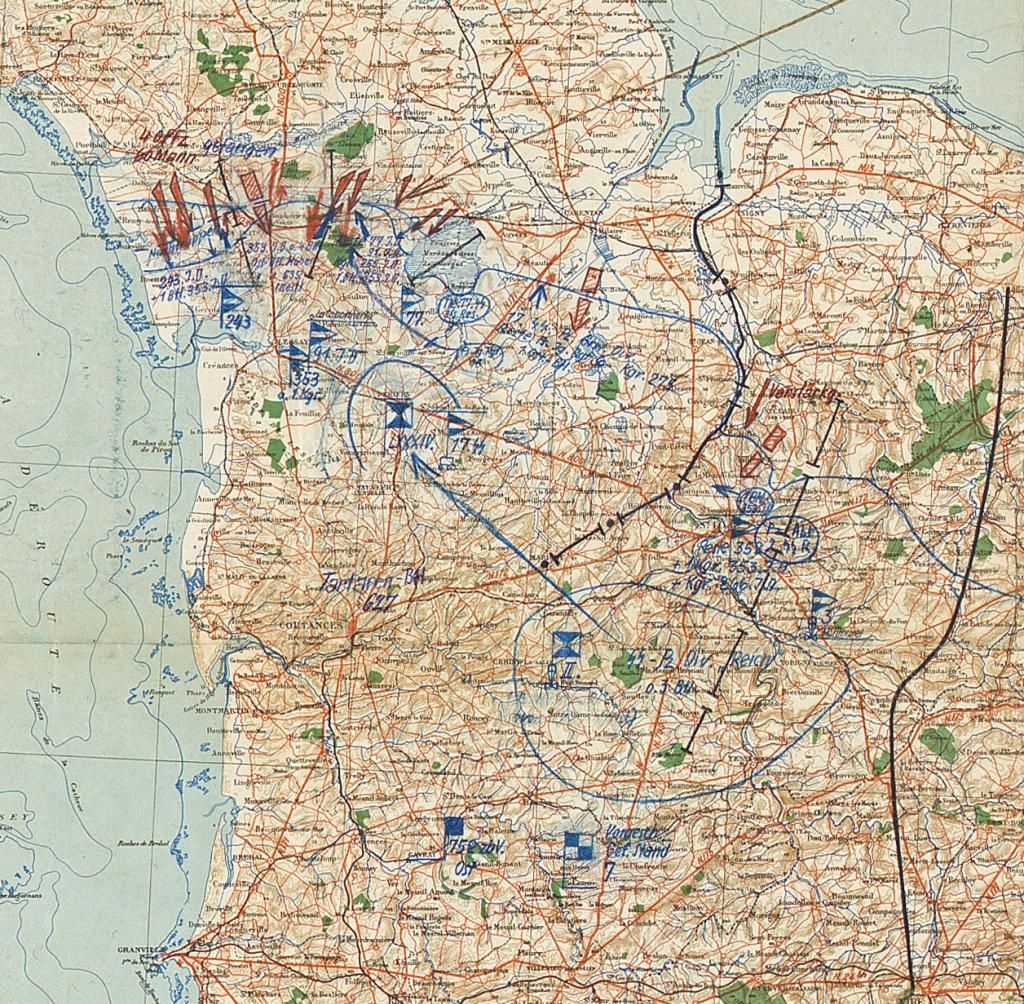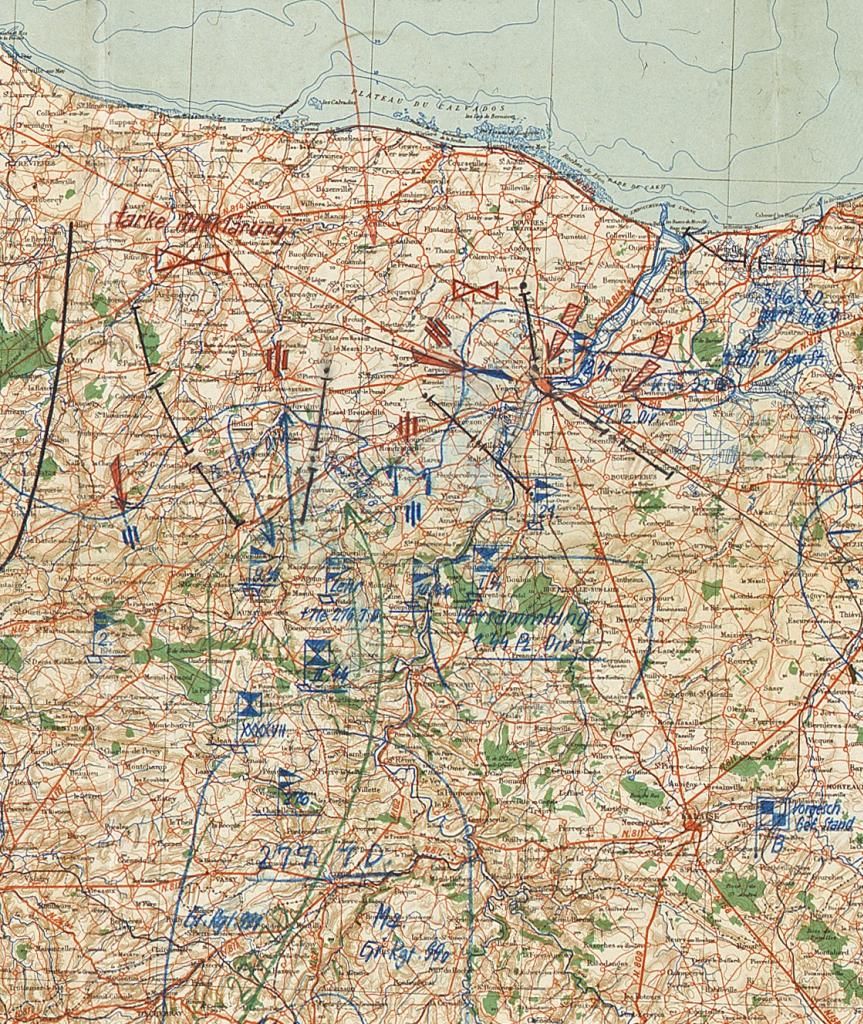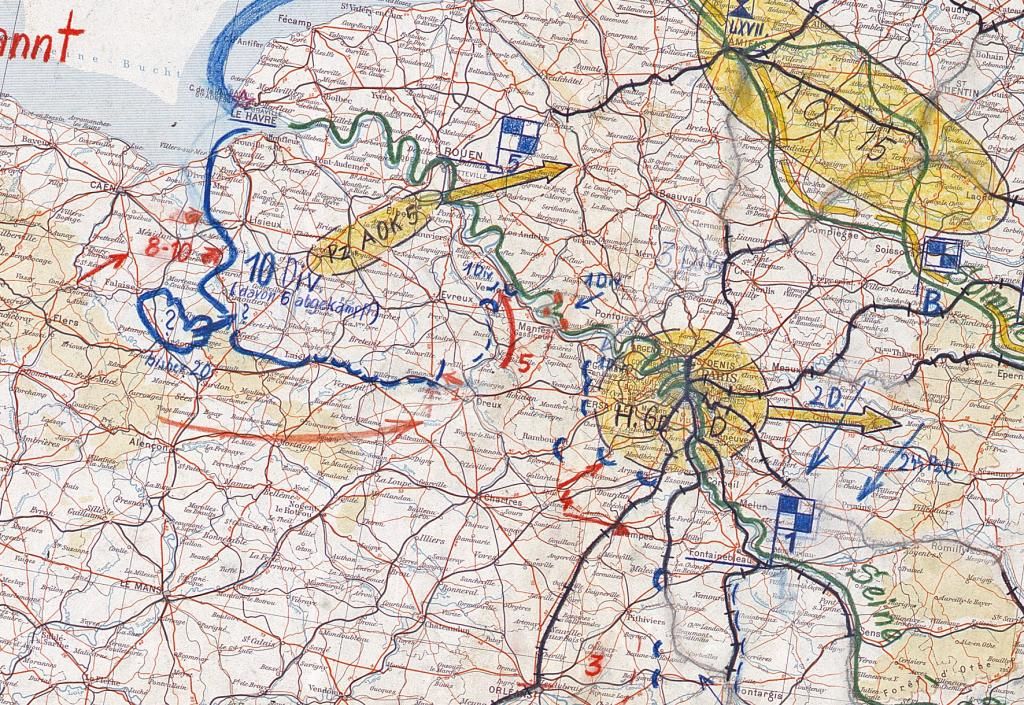In all of the battles taking place this summer, I decided to most closely follow the battles in Normandy. Of course, it took me away from an appreciation of the titanic struggles on the Eastern Front, which is an area I enjoy studying and have a fairly large library. But my time is limited. This is the first extended campaign I’ve followed on a day-by-day basis, reading the articles in the Times, reading the daily progression of the battle in Martin Blumenson’s volume “Breakout and Pursuit” from the U. S. Army Official History of the war, and finally poring over all of those German daily situation maps.
I don’t know that I’ve learned anything in particular that’s new, but I have a much better appreciation for several things about the battle. So here they are:
1. The continuation of the deception of Operation Fortitude was even more important than the pre-invasion deception. Yes, I knew they continued Fortitude after D-Day, but I didn’t appreciate just how effective, if not essential, it was to the success of Overlord. If you look at the maps for July 4, you can see just how important it was. This is what the Germans thought was in England, and what they had defending Calais:
The Germans have identified 3rd Army, three of its subordinate corps HQs, and several American armored divisions, all of which actually exist. However, the “First US Army Group” in London, which supposedly controls these units, does not exist. Of the British units identified, most of them are completely fictitious. The Germans have 10 fully combat ready infantry divisions tied down in Calais because of this intelligence.
Here are the maps for the situation in Normandy on this day:
The Germans have committed the main striking power of their forces in the west to Normandy, consisting of nine panzer divisions. 116th Panzer remains the only mobile division in Calais. In fact, the Germans will continue to raid Southern France for at least one more Panzer Division (9th Panzer) before the campaign is over. To the casual observer, by concentrating the panzers in Normandy, it looks like Fortitude is not effective. But it really is. German defensive doctrine called for the infantry to hold the line, and then the panzers would be free to conduct mobile counterstroke operations. The panzer division was not designed to be a static formation to hold the front line. That job was for the infantry.
But that infantry is being held in Calais to await an expected invasion that will not come. Instead, the panzers committed in Normandy are doing the last thing Rommel and Kluge want them to do; they are dispersed across the front, and being ground down in positional warfare. The Germans were never able to shield them with infantry and free them to form the mobile counterstroke reserve they wanted. The reason is that the infantry divisions necessary to do that are sitting in Calais. That was the true success of Fortitude; had the Germans been able to free up the panzers before Operation Cobra, they might have been able to contain the lodgment through repeated panzer counterattacks. I don’t’ think they were ever going to throw the Allies back to the sea, but they could conceivably have achieved a stalemate into the fall.
2. The German army was slow. Really slow. Watching them maneuver was like watching the Broncos defensive backs in the late 90s Super Bowls. And that’s slow. The Germans simply could not match the speed of the Allies, particularly the Americans. There were three reasons:
A) All of the operational decisions were made by Hitler at the “oberste grüne Tisch” or highest map table most removed from the front. This resulted in a built in delay due to the command and communications cycle. By the time information passed up and orders passed down, the German formations were already a step behind.
B) Allied air power; yes, it had an impact on daytime movements. However, not as much as has been claimed. June and early July saw the worst weather in decades, and the allied air forces were grounded on many days, allowing relatively unhindered operational movement by the Germans. For example, during the American July offensive, the Germans were able to rapidly re-deploy Panzer Lehr division from the British front to the St. Lo sector to bolster the defenses there.
C) The German army lacked organic mobility. I believe this was the biggest factor. The Germans never motorized their army the way the Allies did. Thanks to the gift of hundreds of thousands of rugged Studebaker 6x6 trucks, the Soviets are more mobile than the Germans at this point of the war. In the German army, the infantry marches, the artillery is pulled by horses. And so are the field kitchens. Even the panzer divisions lack a full complement of transport. They just couldn’t move fast even if they wanted to. Once the Americans broke out of the hedgerows, it was all over as we literally ran rings around the Germans.
3. The hedgerow fighting was tough, and so was the German soldier defending it. Untenured’s post of August 11 with Ernie Pyle’s description of hedgerow fighting stated it well. It was perfect defensive terrain. And the German orders of battle, particularly in the LXXXIV Corps sector, showed how tough the Germans were. For a month, that unit was composed of the debris of other units, but they held their ground and fought hard for every field. And they didn’t get breaks; they didn’t get leave, they didn’t get to go to the rear for R & R like the Americans. They had to stand and fight every day for a month against fresh waves of American infantry divisions coming off the beaches. Now imagine if the Germans had actually strung together a real line of infantry across the Allied front, composed of all of those divisions stuck in Calais.
4. SS General Hausser, commander of 7th Army, was a dumbass. During the exploitation of the Cobra breakout, the German units retreating down the west coast of Normandy were being herded into a pocket north of Avranches. In addition to some broken infantry, there were the still relatively cohesive remnants of 2nd SS Panzer and 17th SS Panzergrenadier Divisions. Kluge wanted these units to breakout to the south and attempt to form some sort of cohesive front at Avranches. The Americans were most concerned about this possibility, as the area was easily defensible, and the destruction of the few bridges in the area would have prevented a breakout from Normandy.
Instead, Hausser disregarded Kluge’s order, and directed his forces to breakout to the southeast, and tie into the II Parachute Corps front. By doing this, he created a gap between the German defenders around Mortain and the sea. He left the barn door wide open, and Patton ran through it. By the time the Germans reacted by launching their abortive Mortain counter-stroke, it was too late. Once again, the Germans were slow. Patton’s VIII Corps was rampaging through Brittany, and XV Corps was already around the open flank of 7th Army, headed to LeMans and victory.
Had Hausser followed orders, it is possible the Germans could have restored a front around Avranches. The Americans would not have been contained forever, we were too strong. But we would have had to stop and coil up for another strike.
5. Falaise was a spectacular victory. Get over it. There has been so much carping about “letting the Germans get away” at Falaise. Following the battle from the German perspective, their daily situational maps tell a different story. Two complete armies, 7th and 5th Panzer, were completely wrecked at Falaise. The best map is this one
The note “bisher 20” near the pocket means “previously 20;” 20 divisions that were once in the German Order of Battle in the West no longer exist. That is a catastrophe by any yardstick. The men who escaped the pocket were exhausted and disorganized. They were not capable of combat for some time. The result was that all of France was not defensible, and the only real limit on the Allied advance was logistic, not German resistance.
Falaise is better understood as a significant victory in comparison to the Eastern Front. There, in 1941, the Germans encircled numerous pockets of Soviet forces. The reverse began at Stalingrad and is continued through the rest of the war. Looking at all of those battles, a number of features similar to Falaise stand out.
First, many times it was darned hard to close those pincers. Defending soldiers don’t like being encircled, and when they perceive the threat they will fight with a special toughness borne of desperation. In addition, the spearheads trying to make the closure are vulnerable. They have their own open flanks to worry about, are in an exposed position, and tend to be away from supporting forces and their own bases of supply. Such happened in the East at Smolensk in 1941. Try as they might, the Germans just could not close off the pocket. It was very similar to XV Corps at Falaise. Yet the Smolensk encirclement is considered a German victory.
The other point is that very few pockets were hermetically sealed to prevent escape of all forces trapped therein. Many times, both German and Soviet forces either slipped out or fought out of these pockets, again in an effort borne of desperation. So Falaise was really no different in outcome than most encirclement battles of the war. And nobody ever accused the Germans or Soviets of “letting the other side get away.”
So that’s my long take on new insights from the Normandy battle.



